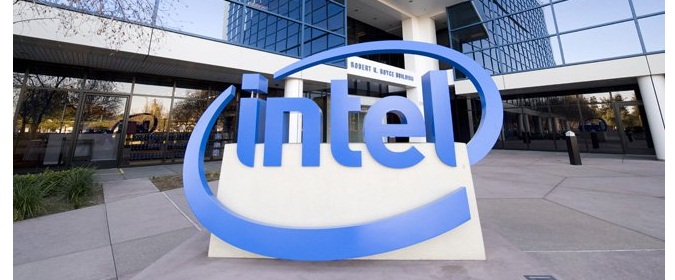Technology
9th Gen Intel Core: The Most Powerful Laptop Platform

Intel launched the most powerful generation of Intel® Core™ mobile processors ever: the new 9th Gen Intel® Core™ mobile H-series processors, designed for gamers and creators who want to push their experience to the next level.
“Our new 9th Gen platform is designed to delight gamers, creators and performance users by giving them more of what they want. We are bringing desktop-caliber performance with up to 5 Ghz and 8 cores in a range of thinner systems and new level of connectivity with Wi-Fi 6 (Gig+) so users can game or create where they want.”
–Fredrik Hamberger, general manager of the Premium and Gaming Laptop Segments at Intel
Why It’s Important: There are 580 million enthusiast PC gamers and 130 million PC-based content creators today1 who care about raw performance as much as they do responsiveness of their PC. They require PCs that can handle everything from demanding AAA games to taxing creative workloads like editing, rendering and transcoding massive 4K video – all while on the go. The 9th Gen Intel Core mobile processors deliver desktop-caliber performance in a mobile form factor and feature amazing performance; the fastest, most reliable wireless with Intel® Wi-Fi 6 AX200 (Gig+); the most versatile wired connectivity with Thunderbolt™ 3; and support for Intel® Optane™ memory technology.
How It Performs: At the top of the stack is the 9th Gen Intel Core i9-9980HK processor, the first Intel® Core™ i9 mobile processor with up to 5 GHz2 with Intel® Thermal Velocity Boost, 8 cores and 16 threads, and supporting 16MB of Intel® Smart Cache. The 9th Gen Intel Core mobile processors are designed for the most demanding workloads to deliver:
- A full range of processors including Intel Core i5, i7 and the unlocked3 Intel Core i9-9980HK for even more performance.
- Up to 33% overall performance leap compared with a 3-year old PC.4
- Up to 28% increased responsiveness.5
- Continuous performance optimization with Intel® Dynamic Tuning for all types of laptops.
How It Games: 9th Gen Intel Core mobile processors deliver desktop-caliber AAA gaming you can take anywhere, even while recording and streaming. With optimized performance on battery and Intel Wi-Fi 6 AX200 (Gig+) – based on the latest Wi-Fi standard offering low latency and ultra-fast gigabit speeds – laptop gaming gets a whole lot better. Gamers will be able to:
- Play immersive AAA gameplay with up to 56% FPS improvement on games like “Total War: Warhammer II”.6
- Experience up to 38% faster turn time on games like “Civilization 6”.7
- Game, record and stream without compromise and broadcast HD live streams up to 2.1 times faster, gen-over-gen.8
- Break the gigabit barrier with the latest Wi-Fi 6 standard running on the Intel Wi-Fi 6 AX200 (Gig+) solution offering almost three times faster throughput and up to 75% latency reduction9 – pair it with Wi-Fi 6 (Gig+) routers based on Intel technology to unleash a great gaming experience.
How It Improves Creation: 9th Gen Intel Core mobile processors power faster video10editing to tackle heavyweight creative tasks on the go. New Intel Optane memory H10 with solid-state storage provides the responsiveness of Intel Optane memory with the capacity of a QLC NAND SSD, speeds application and content loading,11 and Thunderbolt 3 enhances home and office creation via fast single-wire access to multiple 4K monitors, additional external storage and system charging. 9th Gen Intel Core mobile processors will deliver:
- Up to 54% faster 4K video editing versus a 3-year-old PC.12
- With up to 1TB of total storage, Intel Optane memory H10 with solid-state storage will have the capacity users need for their apps and files.
- Up to 63% faster content creation versus a 3-year-old PC via Intel Optane memory H10 with solid-state storage versus a standalone TLC NAND SSD.13
- Intel Wi-Fi 6 (Gig+) lets you share your 10GB multimedia files in less than one minute (almost three times faster than standard 2×2 AC Wi-Fi).14 When connected to a new Wi-Fi 6 (Gig+) router powered by Intel technology it is now possible to create, edit and share faster than ever before.
Where to Get It: Starting April 23, 2019, laptops powered by the 9th Gen Intel Core mobile processors will launch from OEMs including Acer, ASUS, Dell, HP, Lenovo and MSI, as they introduce the most compelling laptops for gaming and content creation.
New Desktop Processors: New additions to the 9th Gen Intel Core desktop processor family were also introduced today. The 9th Gen Intel Core desktop processor lineup now includes more than 25 total products with options ranging from Intel Core i3 up to Intel Core i9 with amazing performance and flexibility to meet a range of consumer needs from everyday productivity to gaming to content creation. The family also brings Pentium Gold and Celeron products to market for entry-level computing, giving consumers even more options to find the right desktop to fit their specific need and budgets. New capabilities include:
- Up to 47% more FPS while gaming.15
- Up to 2.1 times faster video editing compared with a 5-year old PC for 4K and 360 video editing experiences.16
- Intel Wi-Fi 6 (Gig+) with gigabit Wi-Fi speeds delivering almost three times faster than standard 2×2 AC, and 40% faster than Intel® Wireless-AC (Gigabit).17
- Up to 8 cores and 16 threads, up to 5 GHz maximum turbo frequency, up to 16 MB Intel Smart Cache and up to 40 platform PCIe lanes.
For more information about 9th Gen Intel Core visit https://newsroom.intel.com/
1 NewZoo 2018 Global Games Market Report
2 Includes the effect of Intel® Thermal Velocity Boost (Intel® TVB), a feature that opportunistically and automatically increases clock frequency above single-core and multi-core Intel® Turbo Boost Technology frequencies based on how much the processor is operating below its maximum temperature and whether turbo power budget is available. The frequency gain and duration is dependent on the workload, capabilities of the processor and the processor cooling solution.
3 Altering clock frequency or voltage may damage or reduce the useful life of the processor and other system components, and may reduce system stability and performance. Product warranties may not apply if the processor is operated beyond its specifications. Check with the manufacturers of system and components for additional details.
4 As measured by SYSmark* 2018 comparing 9th Gen Intel® Core™ i7-9750H Processor vs. 6th Gen Intel® Core™ i7-6700HQ Processor.
5 As measured by SYSmark* 2018 Responsiveness Subscore 9th Gen Intel® Core™ i7-9750H Processor with 1TB Intel® Optane™ memory H10 with Solid State Storage drive vs. 6th Gen Intel® Core™ i7-6700HQ Processor with Intel® SSD 760P TLC SSD drive.
6 As measured by Total War: WARHAMMER II (Skaven Lab Mode) FPS Workload comparing 9th Gen Intel® Core™ i7-9750H vs. 6th Gen Intel® Core™ i7-6700HQ.
7 As measured by Civilization 6 Turn Time Workload comparing 9th Gen Intel® Core™ i7-9750H Processor vs. 6th Gen Intel® Core™ i7-6700HQ Processor.
8 As measured by Mega-tasking Gaming Scenario on Black Ops 4 comparing 9th Gen Intel® Core™ i9-9980HK vs. 8th Gen Intel® Core™ i9-8950HK.
9 75% Latency reduction: Is based on Intel simulation data (79%) of 802.11ax with and without OFDMA using 9 clients. Average latency without OFDM is 36ms, with OFDMA average latency is reduced to 7.6ms. Latency improvement requires that the 802.11ax (Wi-Fi 6) router and all clients support OFDMA.
10 As measured by Adobe Premiere Pro Video Editing Workload comparing 9th Gen Intel® Core™ i9-9980HK vs. 6th Gen Intel® Core™ i7-6700HQ Processor.
11 As measured by Media Project Load Workload comparing 9th Gen Intel® Core™ i7-9750H Processor with 1TB Intel® Optane™ memory H10 with Solid State Storage drive vs. 6th Gen Intel® Core™ i7-6700HQ Processor with Intel® SSD 760P TLC SSD drive.
12 As measured by Content Load workload on Intel® Core™ i7-9750H vs. Intel® Core™ i7-6700HQ.
13 As measured by 4k video editing workload on Intel® Core™ i7-9750H vs. Intel® Core™ i7-6700HQ.
14 Nearly 3X Faster: 802.11ax 2×2 160 MHz enables 2402 Mbps maximum theoretical data rates, ~3X (2.8X) faster than standard 802.11ac 2×2 80 MHz (867 Mbps) as documented in IEEE 802.11 wireless standard specifications, and require the use of similarly configured 802.11ax wireless network routers.
15 As measured by Hitman 2 FPS Workload comparing 9th Gen Intel® Core™ i5-9500 Processor vs. 4th Gen Intel® Core™ i5-4590S Processor.
16 As measured by Adobe* Lightroom Classic CC Photo Editing Workload comparing 9th Gen Intel® Core™ i5-9500 Processor vs. 4th Gen Intel® Core™ i5-4590S Processor.
17 Nearly 3X Faster: 802.11ax 2×2 160 MHz enables 2402 Mbps maximum theoretical data rates, ~3X (2.8X) faster than standard 802.11ac 2×2 80 MHz (867 Mbps) as documented in IEEE 802.11 wireless standard specifications, and require the use of similarly configured 802.11ax wireless network routers.
About Intel
Intel (NASDAQ: INTC), a leader in the semiconductor industry, is shaping the data-centric future with computing and communications technology that is the foundation of the world’s innovations. The company’s engineering expertise is helping address the world’s greatest challenges as well as helping secure, power and connect billions of devices and the infrastructure of the smart, connected world – from the cloud to the network to the edge and everything in between. Find more information about Intel at newsroom.intel.com and intel.com.
Source: Intel


















































